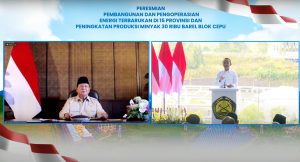Jakarta – The Ministry of Energy and Mineral Resources (ESDM) encourages the optimisation of green investment in increasing the co-firing fuel program for coal-fired power plants (PLTU). This co-firing development opportunity is relatively feasible for developers to switch to cleaner energy.
“Minimal investment in the co-firing program is safe to maintain the main cost of providing electricity that must be borne by the developer,” said Secretary of the Directorate General of Electricity of the Ministry of Energy and Mineral Resources Ida Nuryatin Finahari in the ‘Business and Risk Perspective Energy Transformation Talk’ event, early March.
She said, electricity tariffs handed over to consumers are relatively affordable during the energy transition period. On the other hand, if it continues to have an effect on BPP, it will accommodate it in the extension of the electricity purchase agreement (PJBL) so that there is no increase in electricity rates.
Finahari said the Ministry of Energy and Mineral Resources would ensure that the price of biomass fuel as well as the selling price of electricity for the developer was to support the energy transition commitment.
PT PLN Nusantara Power (PNP) is exploring the possibility of postponing the early retirement of their steam power plant (PLTU) by increasing the implementation of co-firing or mixing coal fuel with biomass up to 100 percent over the next three years. The plan has been submitted to the Ministry of Finance to try to completely replace the use of coal through biomass fuel.
PNP President Director Rully Firmansyah said the plan to use biomass as the main fuel will be carried out at the Paiton PLTU. Currently, PNP has collaborated with a Japanese manufacturing company to study the potential for the 100 percent mix.
A number of PLTU owned by PNP which are planned to be retired early in the next three years, require a large investment to build new renewable energy generators. The Paiton PLTU has a capacity of 200 megawatts. Firmansyah said that if it is retired and replaced with solar panels, it will require 1,500 hectares of land, which is difficult to find in Java. (Hartatik)













